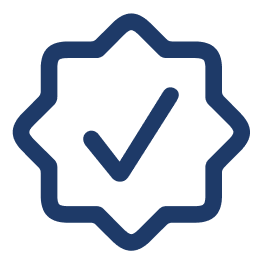When you are preparing your resume, you might wonder what the significance of the CEFR level means, especially if you are presenting your language skills to potential employers. The CEFR, or Common European Framework of Reference for Languages, is a widely recognized standard used to gauge an individual’s language proficiency across Europe and is now used globally. Including your CEFR level on a resume can provide a clear and standardized representation of your language abilities to employers.
Understanding the CEFR Levels
The CEFR framework is divided into six levels, which are A1, A2, B1, B2, C1, and C2. Each level describes the learner’s ability to understand and produce language in familiar and unfamiliar contexts:
What's your English level?
Discover your level now: A1/A2/B1/B2/C1/C2 and GET your certificate!
| CEFR Level | Proficiency |
|---|---|
| A1 | Beginner |
| A2 | Elementary |
| B1 | Intermediate |
| B2 | Upper Intermediate |
| C1 | Advanced |
| C2 | Proficient |
These levels reflect different stages of language learning, starting from basic usage at the A1 level to a near-native competence at the C2 level. Including your specific level helps communicate your abilities clearly and effectively.
Why Include CEFR Levels on a Resume?
Including your CEFR level on a resume is beneficial because:
- Clarity: It provides a standardized measure of language capability that is recognized internationally.
- Relevance: Many jobs and educational programs require specific language proficiency levels.
- Transparency: Hiring managers can quickly understand your language skills without ambiguity.
Understanding how these levels correspond to actual capabilities can be particularly useful for language positions or roles requiring communication across multilingual teams.
How to Include CEFR Levels on Your Resume
Including your CEFR level on your resume can be done elegantly by adding a dedicated ‘Languages’ section. Clearly list the languages you speak, along with the corresponding CEFR levels. For example:
Languages:
- English – C1 (Advanced)
- French – B2 (Upper Intermediate)
- Spanish – A2 (Elementary)
This setup allows employers to assess at a glance whether your proficiency meets their requirements.
CEFR Levels and Job Requirements
Certain industries might demand a specific CEFR level depending on their needs:
- Customer Service or Sales: Companies might require at least a B1 or B2 level for roles involving direct customer interaction.
- Academic and Educational Settings: A C1 or C2 level could be mandatory for teaching roles or conducting research in another language.
Being aware of your CEFR level not only helps in job applications but also in choosing appropriate GET Global English Test or language courses that can further your skills.
Improving Your CEFR Level
If you wish to boost your CEFR level, consider enrolling in language courses or engaging with language learning apps. Consistent practice, interaction with native speakers, and comprehensive tests are crucial.
Additionally, there are various online resources, such as the British Council, that provide insights and learning materials to improve your language skills.
Conclusion
Understanding what CEFR level means on a resume and how to apply it effectively can significantly enhance your resume’s clarity and appeal. By presenting your language skills using this standardized format, you provide international employers with a straightforward measure of your capabilities, often giving you an edge in cross-cultural and multilingual jobs.
For more in-depth exploration into CEFR and resources to enhance your language proficiency, platforms like the Cambridge Dictionary offer excellent support and information.




